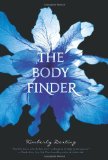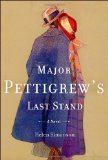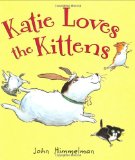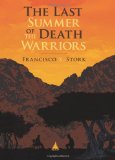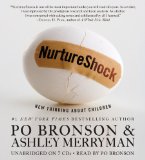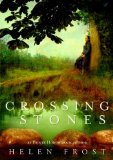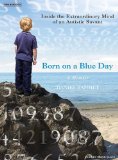Review of The Body Finder, by Kimberly Derting
by Kimberly Derting
Harper, 2010. 329 pages.
Starred Review
Starting to read this book late at night, thinking I could read only a chapter or two because I was so tired, was a major mistake. No, this was one of those books that got me enjoying it far too much to look at the clock until I’d read the last page.
I hope that fans of Twilight will find this book. There’s the same feeling of love destined to happen (with a lot more reasons for it), a paranormal element, the heroine lives in Washington State, her uncle (okay not her father) is a police chief, she falls down a lot (though not quite as often as Bella), and her life is saved by her true love. In fact, with those rescues, I was reminded of good old-fashioned romantic suspense, especially the Mary Stewart novels I devoured in seventh and eighth grade. Best of all, the writing is excellent and the romance is exquisitely done. I think teens will love this book. I know I did!
But I’m getting ahead of myself. The story opens with a prologue when 8-year-old Violet hears a strange sound her father can’t hear, follows it through the woods, and finds a dead body.
Then we skip to the beginning of Violet’s junior year of high school. Like all teens, she doesn’t feel like she fits in, but she does have some legitimate reasons:
“After all, how many girls had inherited the ability to locate the dead, or at least those who had been murdered? How many little girls had spent hours of their childhood scouring the woods in search of dead animals left behind by feral predators? How many had created their own personal cemeteries in their backyards to bury the carnage they’d found, so the little souls could rest in peace?”
Something weird happened to Violet over the summer. Her best friend, Jay, whom she’s known since they were six years old, changed over the summer. They have done everything together since first grade, and he even knows her secret and keeps it safe. He even helped her make the little graves, by her side, not as if it were something strange. But now…
“She hated these new, unknown feelings that seemed to assault her whenever he was around, and sometimes even when he was only in her thoughts. She felt like she was no longer in control of her own body, and her traitorous reactions were only slightly more embarrassing than her treacherous thoughts.
“She was starting to feel like he was toxic to her.
“That, or she was seriously losing her mind, because that was the only way she could possibly explain the ridiculous butterflies she got whenever Jay was close to her. And what really irritated Violet was that he seemed to be completely oblivious of these new, and completely insane, reactions she was having to him. Obviously, whatever she had wasn’t contagious.”
As if that weren’t enough to deal with, on the first weekend after school has started, she goes to an end-of-summer party at a lake. She’s riding a Wind Runner with Jay when she feels drawn to a certain part of the lake, has to see what’s there, and finds the body of a teenage girl.
When the next girl disappears, people start to get worried.
Now, on top of Violet’s ability to find the bodies of murdered creatures, it turns out that the same echo of the creature sticks to its murderer. She learned this over the years from her cat, a natural predator. If she found a certain dead mouse by an odd taste in her mouth, she’ll have the exact same sensation when her cat, its killer, comes around.
So shouldn’t she use this ability to find whoever murdered the girl? Shouldn’t she finally use her bizarre “gift” for a valuable purpose?
This book reminded me of Num8ers, by Rachel Ward. Both books tell a story in contemporary times with one little addition — a girl who has a paranormal, rather morbid gift. However, The Body Finder tells a story that is much less dark. Instead of being an orphan, Violet has a warm and loving family. She is protected by her parents, her police chief uncle, and Jay, all of whom know about her gift.
But when you go looking for a murderer, you’re bound to run into trouble. Her family and Jay are protective, but they underestimate the strength of Violet’s gift and her obsession as more girls are killed.
Of course, Violet’s putting herself in danger only gets Jay angry and adds to the misunderstanding between the two of them.
This book has more making out than the Mary Stewart novels I used to read in junior high. But other than that, you can think of this as good old-fashioned romantic suspense. Pick this up when you’re in the mood for a dose of danger plus true love. You’d think a book called The Body Finder would be gruesome, but I found it to be sweet.
Find this review on Sonderbooks at: www.sonderbooks.com/Teens/body_finder.html
Disclosure: I am an Amazon Affiliate, and will earn a small percentage if you order a book on Amazon after clicking through from my site.
Source: This review is based on a library book from the Fairfax County Public Library.
